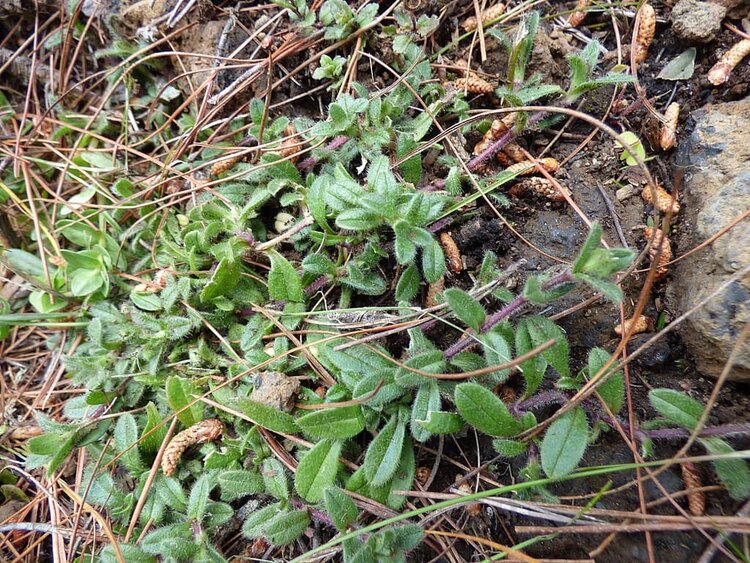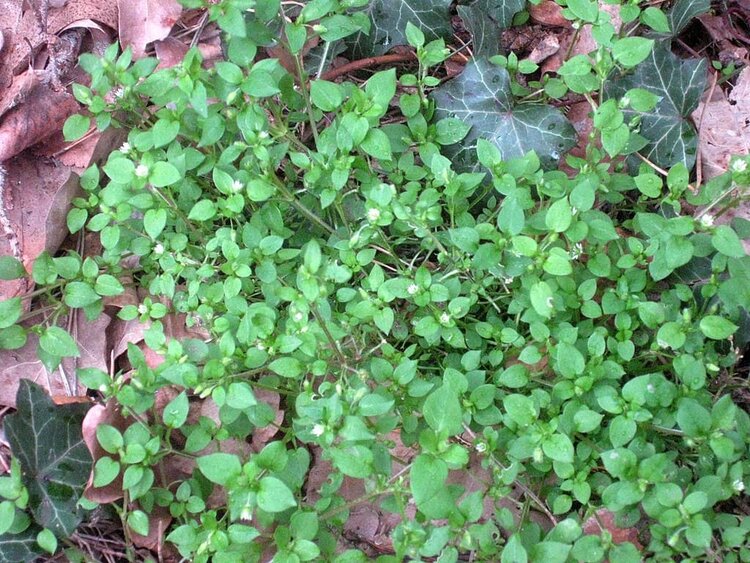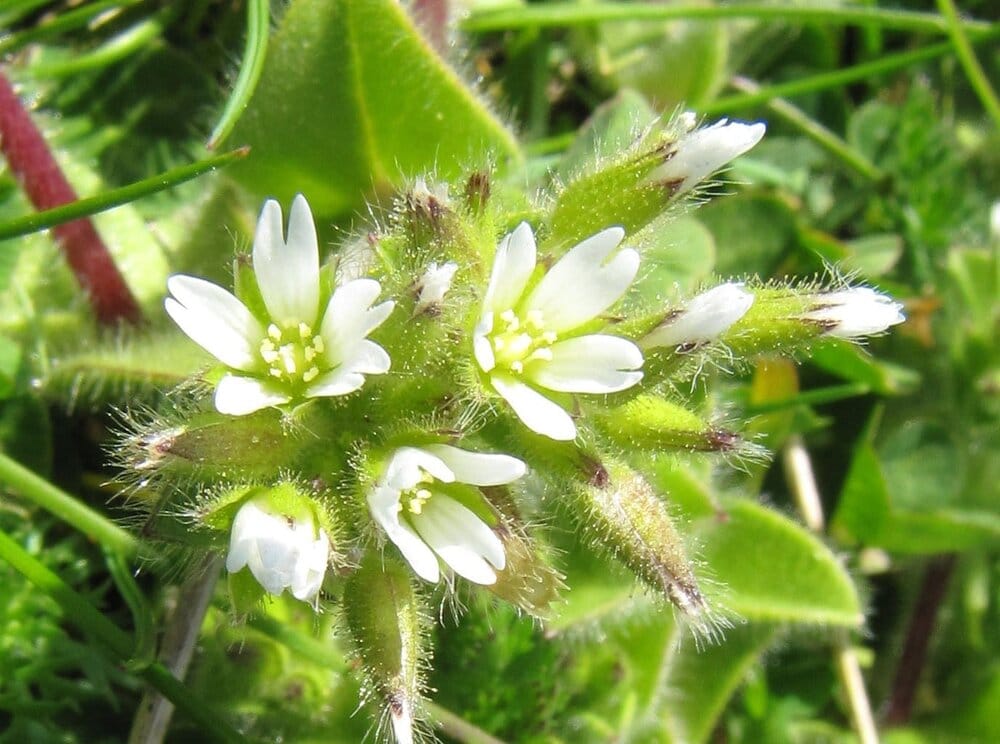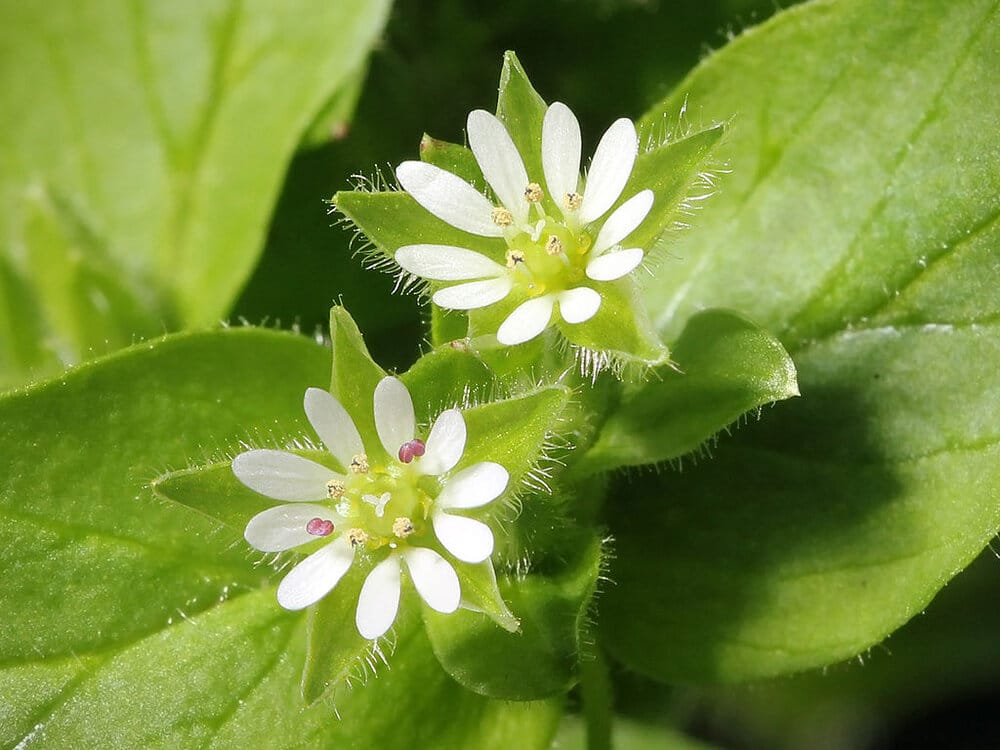Weed Profile: Chickweeds
Mouse-ear Chickweed

Mouse-ear chickweed (Cerastium fontanum ssp. vulgare) showing hairy leaves & red-purple stems
Mouse-ear chickweed is a winter annual weed with a vigorous, low-growing habit. The reddish stems may root at nodes when in contact with the soil. The flowers are small and white, with slightly notched petals.
Seeds germinate in fall and grow during the cool winter months. Summer heat kills chickweed, though in cooler regions it can act as a perennial or biennial. It produces many small, white flowers and seeds throughout the winter.
Common Chickweed

Common chickweed (Stellaria media). Leaves are hairless, stems are lighter and finer than mouse-ear chickweed.
Common chickweed is an annual winter weed similar in growing season, habit and flowers to mouse-ear chickweed. The stems of common chickweed are finer with less red coloration, and the plant lacks hairs on the leaf surface. Leaves are light or bright green as opposed to dark green. The petals of common chickweed are so deeply notched as to appear as two separate petals.
Seeds dropped by common chickweed in cooler months can germinate and grow immediately; seeds dropped closer to summer will remain dormant until cooler weather and shorter days return in fall. These multiple generations per season can create very large, dense patches very quickly, choking out desirable plants and grasses.
| Item | Mouse-ear Chickweed | Common Chickweed |
|---|---|---|
| Leaves | Dark green, with soft hairs on leaf surface | Bright/light green, few/no hairs on leaf surface |
| Flowers | 5-petaled, white, small notch on petals | 5-petaled, white, very deep notch on petals (looks like 10 petals) |
| Stems | Red-purple and quite hairy | Green-brown, some hairs |

Mouse-ear chickweed flower. Note the small notch on petals.

Common chickweed flower, showing the deep notch on the petals.
Cultural Issues & Controls
Both chickweeds are capable of flowering even when mowed closely, and are more tolerant of shade and wet soils than turf grasses. Mouse-ear chickweed is also tolerant of compacted clay soils. Both thrive as lawn weeds as their fertility and pH needs are similar to most turf grasses. The best defense is a healthy, thick lawn that keeps sunlight from reaching the soil and aiding weed seed germination. This can be achieved with good fertility, mowing regularly to the proper height, and lawn aeration to encourage thick growth.
Pre-emergents in fall and applied through winter can prevent chickweed seed from germinating, though if you plan on lawn seeding in fall, pre-emergent weed control must be delayed until new grass has been mowed twice. Chickweeds can also be controlled by most selective and non-selective post-emergent herbicides.
Photo Credits:
- Mouse-ear chickweed-Forest & Kim Starr / CC BY 3.0 US
- Common chickweed-Wilhelm Zimmerling PAR / CC BY SA
- Mouse-ear chickweed flower-Phil Sellens from East Sussex / CC BY 2.0
- Common chickweed flower-Kaldari by CC0 (public domain)